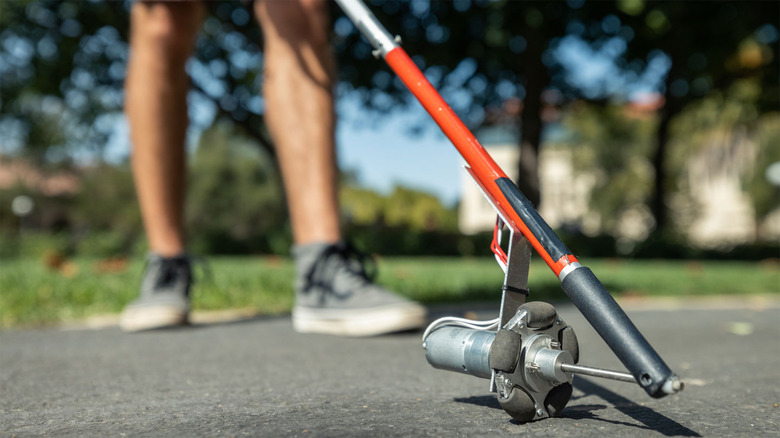Researchers Build A Smart Cane With Integrated Navigation For The Visually Impaired
Stanford University researchers have constructed a cane that could be of significant use to the blind or visually impaired. The cane costs about $400 and is augmented with the ability to self navigate. Researchers leveraged technology designed for autonomous vehicles in the design to guide the visually impaired safely and efficiently through the environment.The cane is designed to help the user detect any obstacles in their path and easily navigate around those obstacles indoors or out. One of the biggest benefits of the new augmented cane is that it significantly cheaper than smart canes that came before it. Some of the past smart canes were extremely heavy, weighing up to 50 pounds, and cost as much as $6000.
The new augmented cane utilizes state-of-the-art sensors and only weighs three pounds. It could be built at home from freely available parts and open-source software for a price of around $400. Researchers aimed to build a portable and easy cane for the hundreds of millions of people around the world who are visually impaired.
Among the sensors used by the cane is a LIDAR sensor used to measure the distance to obstacles to help users navigate around those obstacles. Additional sensors include GPS, accelerometers, magnetometers, and gyroscopes. The sensors work together to monitor the user's position, speed, direction, and other data.

The cane also has his AI-based wayfinding and robotics algorithms similar to simultaneous localization and mapping technology. At the tip of the cane is a motorized omnidirectional wheel designed to be in constant contact with the ground. That wheel is a critical component of the system and leads the user by gently pulling left or right around obstacles. The integrated GPS capability can guide the user to precise locations.
